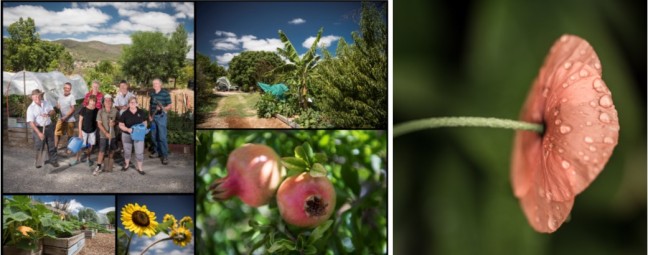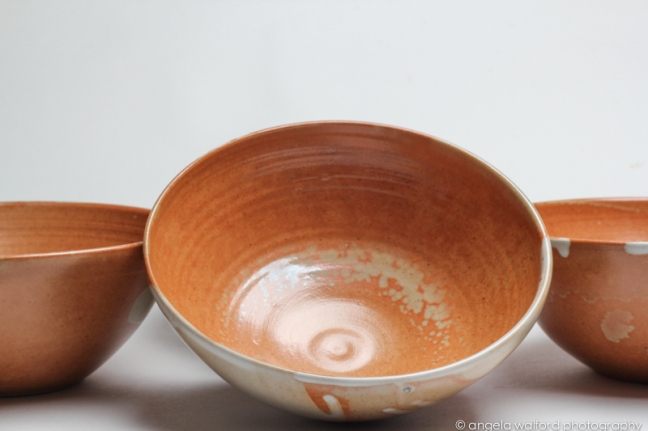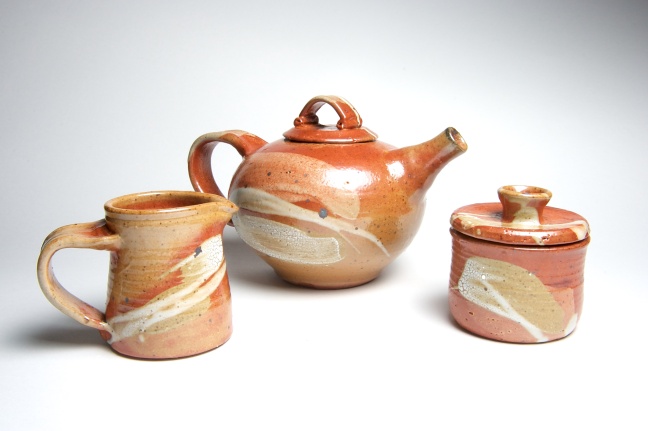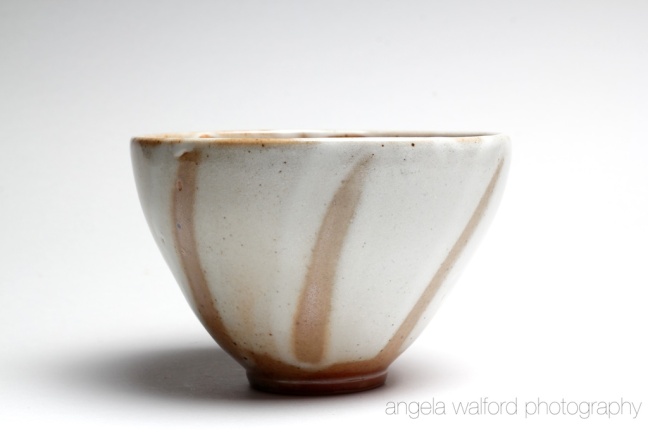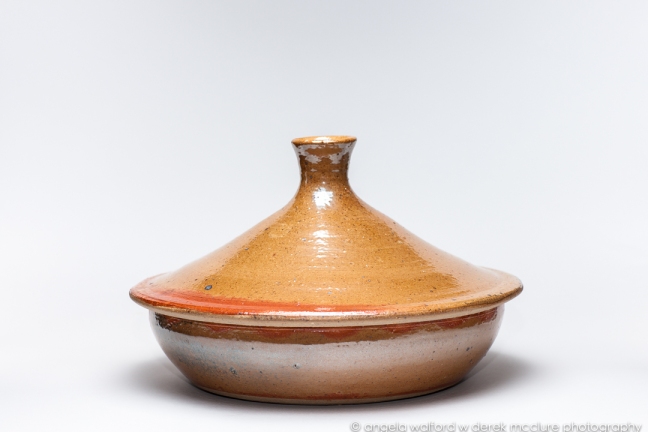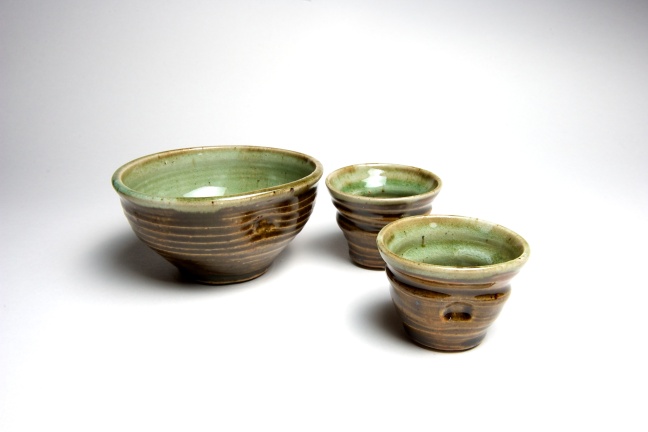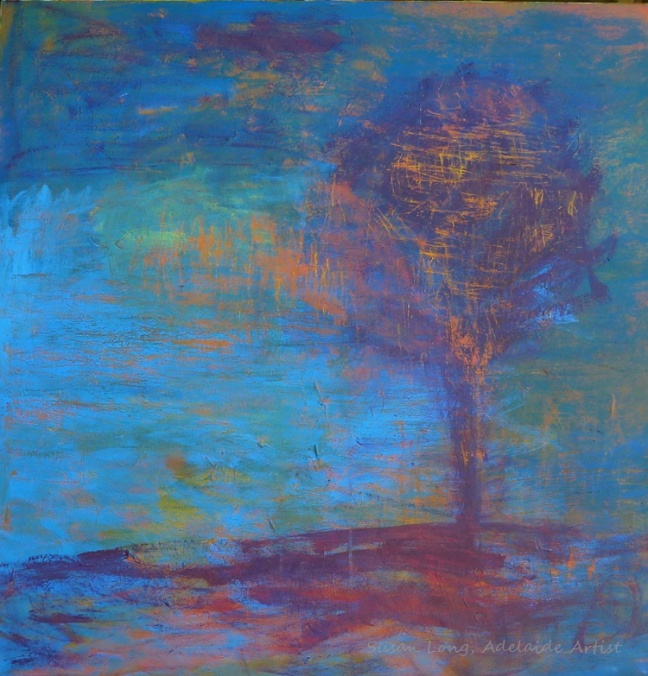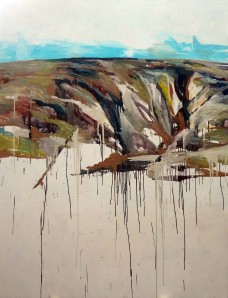This month local community artist, writer and filmmaker Mona Khizam is co-hosting (along with artist Catherine Buddle) the workshop, Identity, Memory and Place at Gallery 1855. We spoke to Mona about her pursuits and the experiences behind them.
Can you start by providing an introduction about yourself and your artistic background?
Well, my academic background is in social work, teaching and human rights. My family is from Lebanon so that means like other ‘ first generation Australians’, I was privy to both Australian culture and another culture growing up. You’re born here but you see things differently. You’re Australian but you also have another understanding of how family, business and community can work. This is cultural diversity in a nutshell and it is what makes pluralistic societies like Australia, Canada, Venezuela etc. the vibrant societies that they are.
Since coming back to Australia in 2014, I have had the opportunity to work with Indigenous filmmakers and I have learnt a lot about Indigenous knowledge, politics and cultures. What I think is that these Indigenous cultures, combined with Anglo-Australian and Australian immigrant cultures, make Australia an extraordinary country, which isn’t to say we don’t have fundamental problems in the areas of racism, equality and social inclusion but we are getting there…

What or who has made a great impression on you?
My dad, Ramez Khizam ( Ronny ) was a self-made man, an immigrant success story if ever there was one, but he was also very humble and modest. He died in 1998 but I still think about him most days. I think his legacy was in his natural curiosity about things, in teaching us the importance of education and the importance of conducting yourself with integrity. He was a very decent man, quiet, self-educated and kind.
My mother Inaam Khizam ( Anna ) also taught me a lot of things, including that you have to take a chance in business and then work very hard to realise your dream. She is the greatest networker I know and she still influences me in her exceptional organisational skills and her tireless work with various community groups.
My son too, has taught me a lot about life and the importance of family.
Living abroad for 30 years also had a huge impact on me. Perhaps the most important things I learnt are:
- There are more ways to do things than the way you happened to be brought up doing them
- You should take the opportunity to learn what you can from cultures that have mastered certain things i.e. the Swedish way of planning and organising and the Lebanese way of seizing the day and enjoying life, since you don’t know what tomorrow might bring…
- At the end of the day, life is all about building community
Each of the places I lived in – Kuala Lumpur, Singapore, Bangkok, Manila, Beijing, Hong Kong, Beirut, Dresden and Stockholm – gave me the opportunity to learn new things. Even before I went abroad though, I was a devotee of life-long learning. Living overseas provided me with a great education. Although there were a ton of challenges, I felt it was a privilege to be able to dip into other languages and experience so many different ways of life. I have thought and also written a lot about this, these cross-cultural issues that both bind and divide us as humans.
As for my artistic background, well, I have always written and been interested in images and cinematography. I trained to be a literacy teacher while first abroad and later, in Sweden, I re-trained as a documentary filmmaker. Filmmaking, whether my own documentary films or those made by community groups I teach, is a wonderful thing because it allows people to say what they want – and need – to say. Film is the great equaliser and one of the most effective ways to contribute to public debates. For example, I am just at the tail-end of a project called North Eastern Girrrls Film Bootcamp in which young women chose to make two films: one about domestic violence in Australia and the other about the importance of language and culture for Uyghur people in China. As with my other community film work, I do not set the theme. The participants choose the topics that are important to them, topics close to their hearts, you might say. And this is exactly what democracy is – being able to express your opinion without retribution. It’s something you are grateful for when you have lived in places where democracy isn’t that highly valued.
So, in a nutshell, my artistic work includes things like:
- My own documentaries,
- ADHD, anarchy, music, fatherhood, refugees, ‘the immigrant experience’ and stories of identity and belonging, or not
- My own community art installations,
- Collaborative arts and cultural projects,
- the 2BEACHES, OneIslandNation democracy project with Open Space Contemporary Arts
- Community film teaching,
- North Eastern Girrrls Film Bootcamp
- Community film events,
- Tea Tree Gully Stories
- Gallery Yampu Open Mic Film Cafe which I ran earlier this year at Port Adelaide
- SAGA : Stockholm International Women’s Film Festival that I founded in Sweden in 2013
- Writing ‘Sahara Libre ! Freedom, Human Rights and Colonialism in The Western Sahara’
- Photographic exhibitions including moving images.
- There but for the grace of God, go I…
In terms of artists that inspire me, there are many but I would name Shirin Neshat (Iranian), Lara Baladi (Lebanese) and Nan Golding (American) and Pipilotti Rist (Swiss).
Your current work at Gallery 1855, There but for the grace of God, go I… is a series of revealing photographs you shot while on a research trip to Algeria, to explore human rights in a Sahrawi refugee camp. Can you tell us more about why you went there and details regarding your trip?
I went to Algeria and The Western Sahara to do research for my human rights/ journalism/ filmmaking studies at Jakobsbergs Folkhögskola in Stockholm. I was there for 6 weeks in 2009. I was interested in finding out what it’s like to be a refugee, sitting forgotten in desert camps for decades. To my surprise, I learnt that the Sahrawis’ situation is actually quite well-known and their struggle for freedom is strongly supported in many European and South American countries. What I found was a thriving community actively building an effective, sophisticated government-in-waiting (Polisario), working with the UN to end the illegal occupation of their country, shoring up their language, culture and identity and educating their kids for the day they regain their independence.
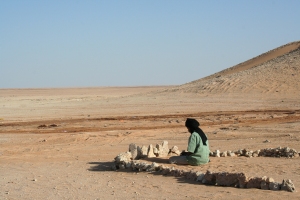
The Western Sahara, known as Africa’s last colony, was doled out to Spain in 1885 when unimaginably greedy European colonial powers carved up Africa between themselves at the Berlin Conference. Ninety years later when the Spanish were on their way out, the Moroccans decided to invade, so the Sahrawis know a lot about occupation.
Since that 1975 Moroccan invasion, some 200,000 Sahrawis have been stranded in refugee camps in the middle of the Hamada ( the desert called ‘The Devil’s Garden’ in English) where it can get up to 50 degrees in the middle of the day and down to zero at night.

There but for the grace of God, go I… is a photographic narrative of this fight for freedom. Each picture offers an insight into the lives of ordinary people struck in the middle of the politics of colonialism. The 19 images are supported by a film of the same name, shot in Semaphore and in The Western Sahara, which highlights the impact of colonialism on our lives.
Through images, text and video footage, the exhibition examines the randomness of dislocation, be it through politics, war, climate change or in the case of the Sahrawis, occupation by an expansionist neighbour. I wanted to investigate if this was important and if so, why? After all, what has it got to do with us? Why should it matter? What I found was that it does matter, not just morally but also because refugees remain refugees because their resources are being plundered. Their country being occupied means that they do not have control over their own assets. In The Western Sahara, these assets are considerable and valuable. They include huge quantities of high quality sand (taken for the beaches of the Canary Islands, for instance), solar and wind power diverted to power Moroccan cities, the best fishing stock off the coast of Africa being exported all over the world (while the Sahrawis eat cheap, imported tinned sardines), phosphate (critical in agriculture as fertiliser) and finally, oil and gold being dug up and spirited away without a cent going to the economy of The Western Sahara.
Many companies, including Australian ones, are involved in this (needless to say, illegal) plundering of resources. In short, what we do over here, matters. The standard we walk past is the standard we accept. The politics of war, occupation and colonialism are random and harsh. Anybody could, through circumstances beyond their control, become a refugee and it’s a soul destroying situation to find yourself in. It could happen to anyone, it could happen to you and it could happen to me but for the grace of God…
In fact, if the Dutch had thought their reception more along the lines of what they were expecting when they landed in Shark Bay in 1616, they might have stayed and colonised Australia. Then we would be having this conversation in Dutch ! That’s how random colonialism is. We should know this, being a colony, but we forget. There but for the grace of God, go I… is a reminder that had things gone differently for us as a nation, we too might have been fighting for our language, culture, identity and freedom as many refugees do, not to mention our own Indigenous communities…
What do you hope people take away from seeing your work?
I hope people see that refugees are just people like you or me, people just trying to raise their kids and live their lives in peace. They do not choose to be refugees and all they want is what everyone wants: freedom.
Your work reflects extreme conditions of humanity and existence… Is it hard for you to keep the momentum up in your work, as you bear witness to terrible emotional suffering, as well as environmental suffering?
In a word, no. Looking away is harder. Mind you, there were times in the camp when I wondered what the hell I was doing there… The work is important, I think because it is too easy to see the refugee as ‘the other’, to diminish them by lumping them all together, instead of seeing they too are people like you and me. These days there is a lot of fear and cruelty in the ‘treatment’ of refugees. As a nation, our track record has gone from the woeful White Australia policy to positive post-war immigration, to something where we now focus almost entirely on the cost of taking in refugees and the ways it can all go wrong instead of seeing the benefits of immigration. We have become very frightened and as a result, very careless in our terminology, whereby ‘refugee’ by default is only a hair’s breadth from ‘terrorist’. If this were the case in 1948 when my father applied to migrate to Australia, he wouldn’t have stood a chance and I wouldn’t be here now. Of course, taking in people is complex and takes resources but it also makes us a stronger, more diverse, more resilient and more international player on the world stage.

Here are some lines from the Introduction of ‘Sahara Libre!’ to answer your question about bearing witness to terrible emotional suffering.
‘Some days I wanted to stay in the camp my whole life. Nothing else existed, it was a world to its own. Life was good. I had what I needed – company, work that made me happy, time to laugh. I was who I wanted to be. Other days, especially at the beginning, I wondered what on earth I was doing there. And what the Sahrawis were doing there. What the hell was wrong with these people, sitting in some God-forsaken refugee camp in the middle of nowhere? Was this it? Was this as good as life was going to get for them? Didn’t they want a better life, if only for their kids? Was it enough to sit suspended in time and space, miserably waiting out their days, hoping against hope that the world might one day sit up and notice their plight?’
Polisario, The Western Saharan government’s mass release of Moroccan prisoners of war in the 1980s and since then, more than 80 United Nations resolutions supporting The Western Sahara and condemning Morocco’s illegal occupation of it and yet still nothing changes… There they sit, freezing by night, sweltering by day and always battered by that cursed wind – wind strong enough to pick up your spit, coat it with a shell of flying sand and send it smashing to the ground 3 or 4 metres from source. Bone-jarringly cold nights, daytime temperatures of over 50° and nothing but desert as far as the eye can see, day in, day out, year in, year out. No wonder they call it the Devil’s Garden, God himself could not get anything to grow in this most savage of environments.
Add to that, no institutions of higher learning, no jobs, no economy to speak of, ‘no nothing’. The Sahrawis, colonised by the Spanish, invaded by the Moroccans, have been to war, laid down their arms, talked nicely with the United Nations and still they are living in refugee camps. They have done everything conceivable to wrench their lands back from an aggressively expansionist Morocco but to no avail. They remain an occupied country.
Imagine it, some 200,000 people huddled together in a handful of camps, cut off from those parts of their family living under Moroccan occupation, a 3rd generation of children being born into these camps, 41 years and counting… What do people do ? How do they cope ? The answer is that they do as anyone else does – they live their lives, as best they can. They grow up, get married, raise their kids. They do their utmost to hold the community together, to survive but what, I wonder, do they dream of in the quiet moments in the day, these people that don’t officially exist, these people supposedly without a future?
Welcome to The Western Sahara…
There were a number of projects that our group from Jakobsbergs Folkhögskola, Stockholm chose to work with – making a documentary comparing Sahrawi teenagers with their Swedish counterparts, compiling a picture reportage of life in the desert, investigating methods of food/ water/ aid distribution but beyond this, what captivated me was the question of identity; Who are these people, these Sahrawis?
And who do you become when your country is occupied, when you have lost a sizeable chunk of your land and have sat in refugee camps for four decades ? When I first saw pictures of Sahrawis, I was a bit daunted. They are a tough looking people. They stand somewhere between Europe (being Spanish-speaking, thanks to Spanish colonialism), the Middle East (their culture sharing much with Arab cultures) and Africa (their lands being situated in the north of that continent). How then, have they managed to maintain their identity, against all odds ? That is what I wanted to find out and this book is my attempt to do just that.
What have been some of your career highlights?
It is always the latest thing. I am very pleased with the North Eastern Girrrls’ work because filmmaking is not easy. It is by far easier to give up than to finish a film. They didn’t give up. They have made two interesting films that speak passionately of identity, community and the right to live safely, without violence.
I am also very pleased to show the images in There but for the grace of God, go I… Niki Vouis and the staff at Gallery 1855 are extraordinary in the way they support emerging and established artists. As a local artist, I really appreciate this. I think that Gallery 1855 is a very fine visual arts facility with a fantastic range of exhibitions, talks and workshops and reflects the Tea Tree Gully Council’s progressive and positive approach to culture and the arts. They do a lot to bring culture and the arts to the community and I am glad to live in a council area that does that.
This month you will co-host an visual art and writing workshop, where participants will explore their own stories and then interpret them using visual art. Are you a writer yourself, who has a serious interest in the visual arts?
I am both a writer and an artist. The workshop, Identity, Memory and Place, is an opportunity for participants to explore their own identity in writing and then transform the written word into an artwork of their choosing. I am co-running this workshop with Catherine Buddle and we are both really looking forward to it.
What would you love to work on in the future, or who would you like to collaborate with?
Well, I should begin by telling you what my other current projects are ;
- Tea Tree Gully Stories which is an oral history documentary film. The Red Carpet Screening is on Friday the 14th of October at 6pm at Tea Tree Players on Yatala Road, Surrey Downs. The event is free and everybody is welcome. RSVP Tea Tree Players.
- Gardens don’t lie… is a photographic and video installation that will also include a 6 x 3 metre garden of South Australian natives. It will initially be held at Adelaide Airport and then hopefully in Tea Tree Gully as well. This project explores the stories our gardens tell about us. Regardless of the way we present ourselves to the world, regardless of the income bracket we fall into, our gardens tell the truth about our values and about how we spend our time and our money.
Thank you for the opportunity to talk about art, culture and There but for the grace of God, go I…
